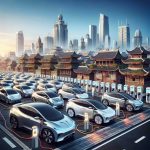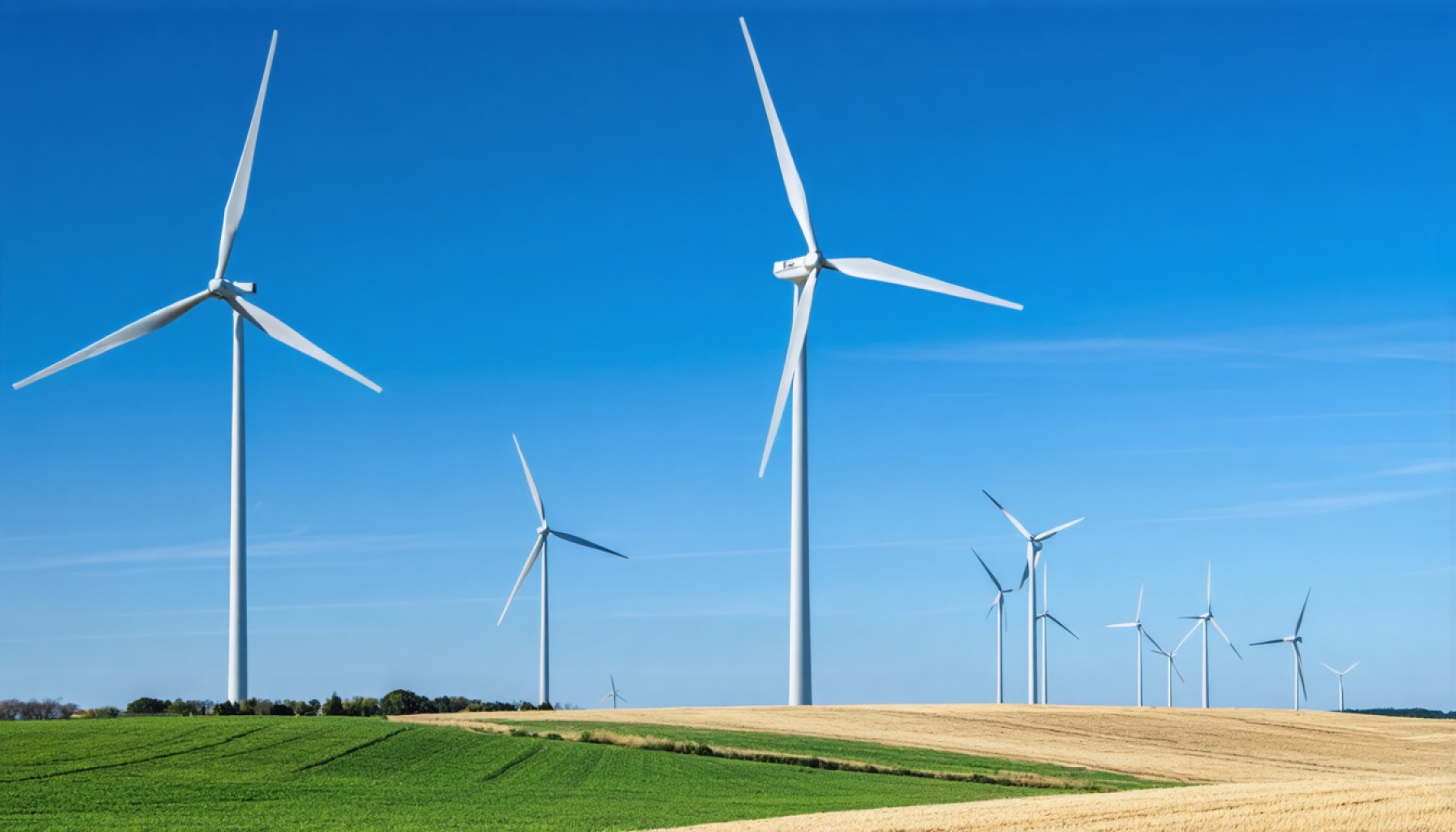- Congressional Republicans have introduced a tax proposal eliminating vital energy credits aimed at boosting clean energy and manufacturing.
- The proposal seeks to revoke $7,500 electric vehicle tax credits and clean energy incentives that have spurred job creation and reduced energy costs.
- Plans include cutting funds for clean air and energy innovations, affecting air quality improvements and emissions reduction initiatives.
- The proposal could increase the national deficit by $3.7 trillion, endangering domestic manufacturing jobs and renewable energy initiatives.
- Families investing in renewable energy face higher costs, such as potential $10,000 increases for rooftop solar installations if incentives are removed.
- Public and civic engagement, especially in affected districts, is crucial to influence legislative decisions and promote environmental sustainability.
A storm brews over Washington as Congressional Republicans unveil a tax proposal poised to dismantle crucial energy credits that have bolstered the American manufacturing sector and supported working families making strides toward energy efficiency. The sprawling 389-page document marks a stark reversal of policies established under President Biden’s Inflation Reduction Act, which had funneled billions toward clean energy and manufacturing incentives in a bid to rejuvenate the economy and slash emissions.
Stripping Incentives, Boosting Deficit
Gone are the popular clean energy credits, which had not only shaved expenses off energy bills for American households but had also catalyzed a renaissance in domestic manufacturing. Pivotal among these were the $7,500 tax credits for electric vehicles—widely credited with sparking a wave of investment and job creation in the automotive industry. Now, their repeal looms ominously, threatening high costs for families and a chilling effect on manufacturing growth.
Attacks on Clean Air and Energy Innovations
Equally disconcerting is the proposal’s broadside against clean air initiatives. Republicans aim to reclaim funds meant for air quality improvements in schools and communities, clean manufacturing enhancements, and electric grid upgrades—initiatives that shield public health and keep pollution at bay. This rollback arrives hand in hand with a push to defund the Methane Emissions Reduction Program, stripping away protocols that mitigate pollution and protect communities from harmful emissions.
A Shift Toward Short-term Gains
While the bill’s proponents argue the necessity of reducing governmental expenditure, the repeal of these environmentally progressive credits stands as a revenue-negative maneuver, potentially escalating the national deficit by a staggering $3.7 trillion. Experts warn that such fiscal and policy setbacks could drive jobs overseas, relinquishing gains made in creating a domestic “battery belt” across states like Georgia and North Carolina.
The Stakes for American Families
For families considering the shift to renewable energy, the clock is ticking, particularly as the rooftop solar credit stands on the chopping block. This could result in an additional $10,000 out-of-pocket for those who delay.
The proposal frames a crucial moment, not only for the nation’s commitment to energy independence but also in the fight against climate change. The growing tension underscores a pivotal question as the legislative landscape awaits a showdown: will fiscal short-sightedness outweigh long-term economic and environmental prosperity?
What Can You Do?
The path forward calls for civic engagement. Republican constituents, in particular, hold a powerful sway in urging their representatives to reconsider. Key districts, notably those already enjoying the fruits of new manufacturing investments, stand as arenas for persuasive activism. Meanwhile, advocates for renewable energy continue to rally support, stressing the profound local and global stakes involved in the decisions made within the hallowed halls of Congress.
As vibrant discussions unfold nationwide, the public’s voice could yet echo through these legislative corridors to shape a sustainable future, balancing economic vitality with environmental stewardship.
Unveiling the Storm’s Eye: How Congressional Tax Reforms Could Reshape America’s Clean Energy Future
Overview and Expert Analysis
Congressional Republicans’ recent tax proposal aims to terminate vital energy credits, reversing policies from President Biden’s Inflation Reduction Act. These credits have been instrumental in energizing American manufacturing and fostering clean energy advancements. Here’s a deeper dive into potential ramifications and wider impacts of this proposal.
The Crux of the Proposal
Attack on Clean Energy and Air Quality Initiatives
– Clean Energy Credits: The proposed rollback strips away the $7,500 tax credit for electric vehicles (EVs), risking a downturn in EV investment and manufacturing, which have contributed significantly to job creation (Source: Department of Energy).
– Clean Air Initiatives: Funds aimed at enhancing air quality and modernizing the electric grid, crucial for maintaining public health standards, face potential reductions.
The National Deficit and Economic Implications
– The proposal is set to increase the national deficit by roughly $3.7 trillion, contradicting the intent to curtail government spending. The short-term fiscal focus may inadvertently drive American jobs overseas and weaken efforts to establish a domestic “battery belt” in southern states such as Georgia and North Carolina.
Real-World Implications for American Families
– Rooftop Solar and Home Energy: The potential slashing of rooftop solar credits could escalate costs for homeowners by approximately $10,000 if installation is delayed, significantly impacting family budgets and suppressing renewable energy adoption.
– Electric Vehicle Adoption: The removal of EV tax credits may slow the booming EV market in the U.S., leading to reduced consumer savings on energy and vehicle costs.
Industry Trends and Market Forecast
– Shift to Renewables: Despite legislative headwinds, the global market continues to favor renewable energy investments. The sustainable energy sector is expected to grow, driven by technology advancements and international climate commitments (Source: International Energy Agency).
– Manufacturing Landscape: A pivot away from incentivizing clean manufacturing could deter investment, potentially leading to a competitive disadvantage internationally.
How-to Steps for Civic Engagement and Advocacy
1. Educate Yourself: Understand the specifics of the legislation and its impact on local and national scales.
2. Engage with Legislators: Reach out to your representatives, emphasizing the benefits of sustained investment in clean energy for job creation and environmental health.
3. Community Action: Mobilize local advocacy groups to amplify the message and engage in public forums and panels.
Controversies and Limitations
– Critics argue this proposal underscores a tension between fiscal responsibility and sustainable development, spotlighting the delicate balance policymakers must maintain.
– The absence of these credits could deter long-term investments in greener technologies, risking stagnation in innovation and progress toward emissions reduction goals.
Recommendations and Quick Tips
– Investment in Home Energy Efficiency: Consider investing in energy-efficient appliances and home upgrades now, before potential rollbacks make such improvements costlier.
– Stay Informed: Regularly consult credible sources such as the Environmental Protection Agency and the Energy Information Administration for updates on energy policies and incentives.
– Support Local Renewable Initiatives: Participate in and support community solar projects or local wind farms to reduce reliance on broader federal incentives.
Final Thoughts
The legislative outcome remains pending, but proactive engagement by citizens and stakeholders might steer decision-making toward a balanced path of economic growth and environmental sustainability. This pivotal moment in policy-making could define America’s energy landscape for decades.
For more on clean energy and policy developments, visit Department of Energy.
 Republicans’ New Tax Proposal Threatens the Future of Clean Energy and American Manufacturing
Republicans’ New Tax Proposal Threatens the Future of Clean Energy and American Manufacturing  The Silent Revolution: How Chinese EVs Are Powering Indonesia’s Automotive Future
The Silent Revolution: How Chinese EVs Are Powering Indonesia’s Automotive Future  Stryker’s Strategic Dividends: A Beacon Amid Market Euphoria
Stryker’s Strategic Dividends: A Beacon Amid Market Euphoria  The Shocking Drop in EV Sales: What’s Behind the Curve?
The Shocking Drop in EV Sales: What’s Behind the Curve?  Can AMETEK Ride the Wave of Market Optimism?
Can AMETEK Ride the Wave of Market Optimism?  The Bold Transformation: How Netflix’s New Design Will Change the Way You Discover Content
The Bold Transformation: How Netflix’s New Design Will Change the Way You Discover Content  Chinese Titan BYD Charges Past Tesla in Europe’s Electric Arena
Chinese Titan BYD Charges Past Tesla in Europe’s Electric Arena  How Apple’s Dance with China’s Market Shifts the Global Tech Landscape
How Apple’s Dance with China’s Market Shifts the Global Tech Landscape  The Spark Behind Schenectady’s Electrifying Weekend: A Deep Dive into the Future of Cars
The Spark Behind Schenectady’s Electrifying Weekend: A Deep Dive into the Future of Cars 